A solo project focusing on interaction design as a method to improve calling 911 in the United States.
User Experience Designer / User Interface Designer
Adobe Illustrator / Adobe XD
Sep. - Dec. 2018
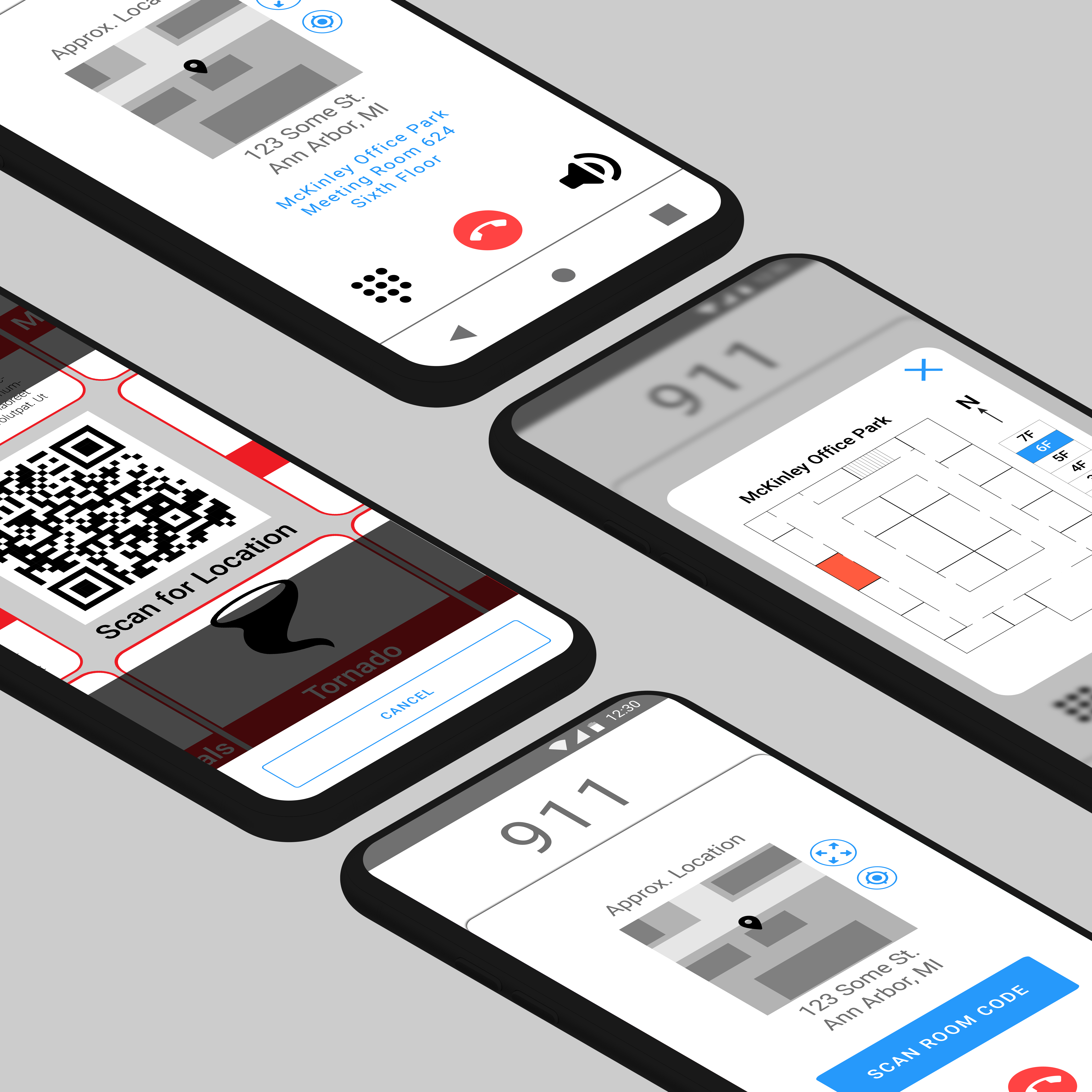
Inspiration
I toured a local 911 center, and their primary concern was call processing time, or how long their operators spent speaking with each caller. I saw how much of the work was still done manually, and knew that meant more time callers had to spend on hold.
Design Goal
After speaking with 911 dispatchers I learned that GPS coordinates from smartphones are being incorporated into the 911 call process, but they're not a panacea. This project was an attempt to design a new tool that can be used when dialing 9-1-1 in the United States that would help decrease the time it takes to locate a caller.
Outcome
I re-imagined the interaction between 911 callers and dispatchers when callers need to describe their specific location within a building. I did this by adding a new tool to caller's physical environments, QR codes, and designed a solution to integrate them with the current process of calling 911. I created prototypes to model how the new interactions would happen on both a caller's smartphone and the monitors in front of 911 dispatchers.
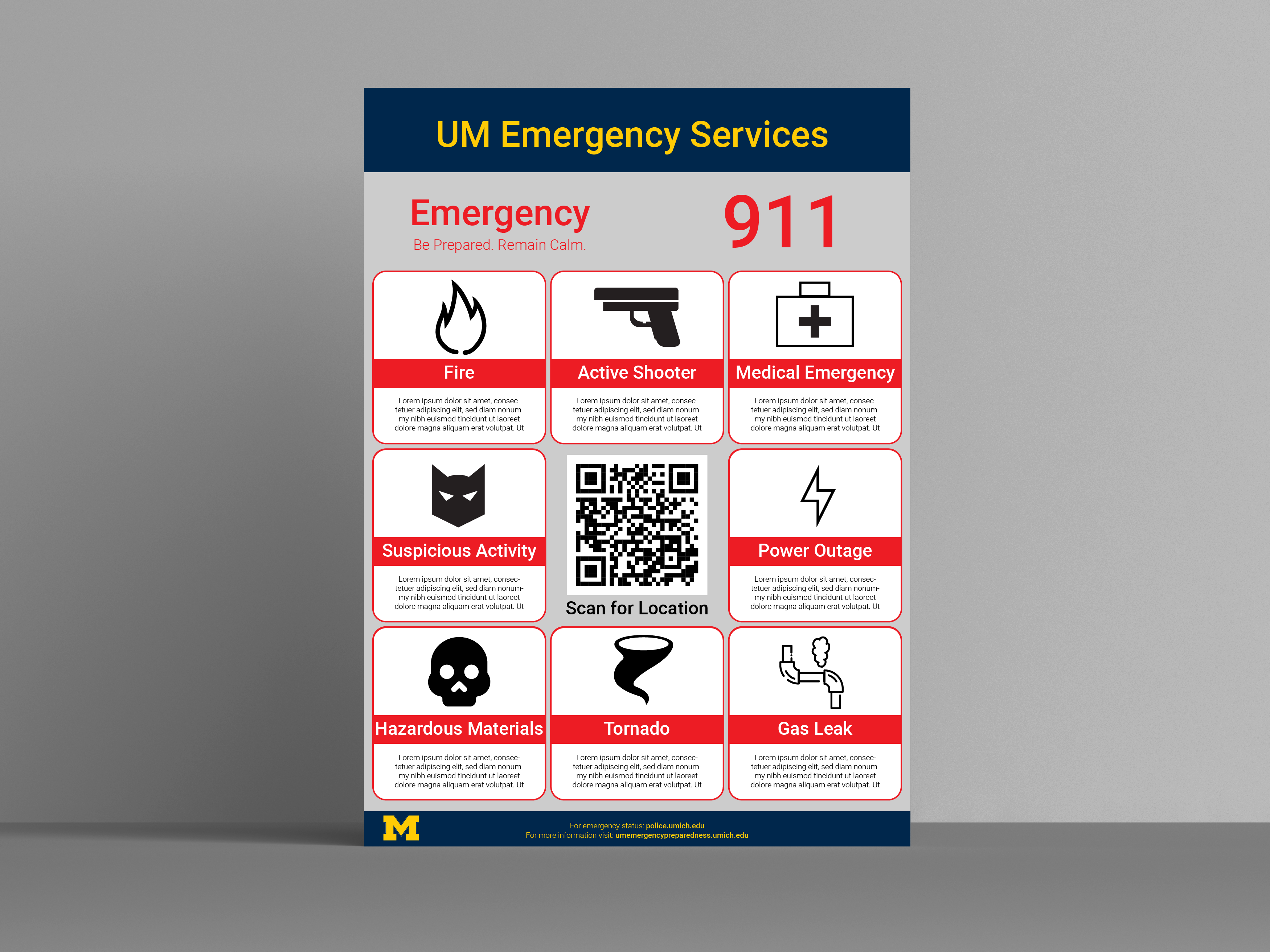
The New Tools
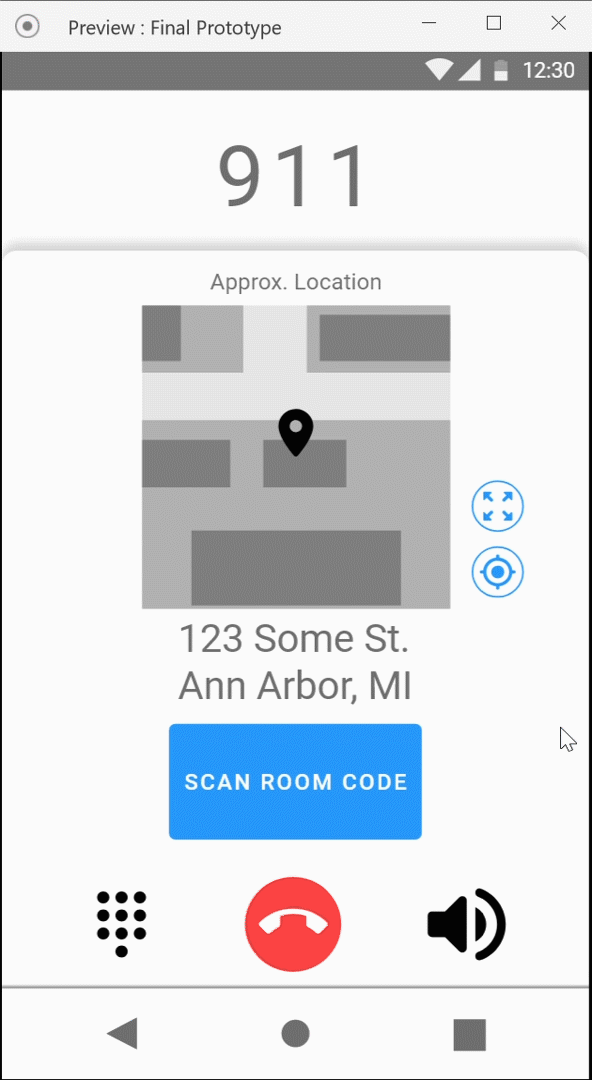
QR Code Integration
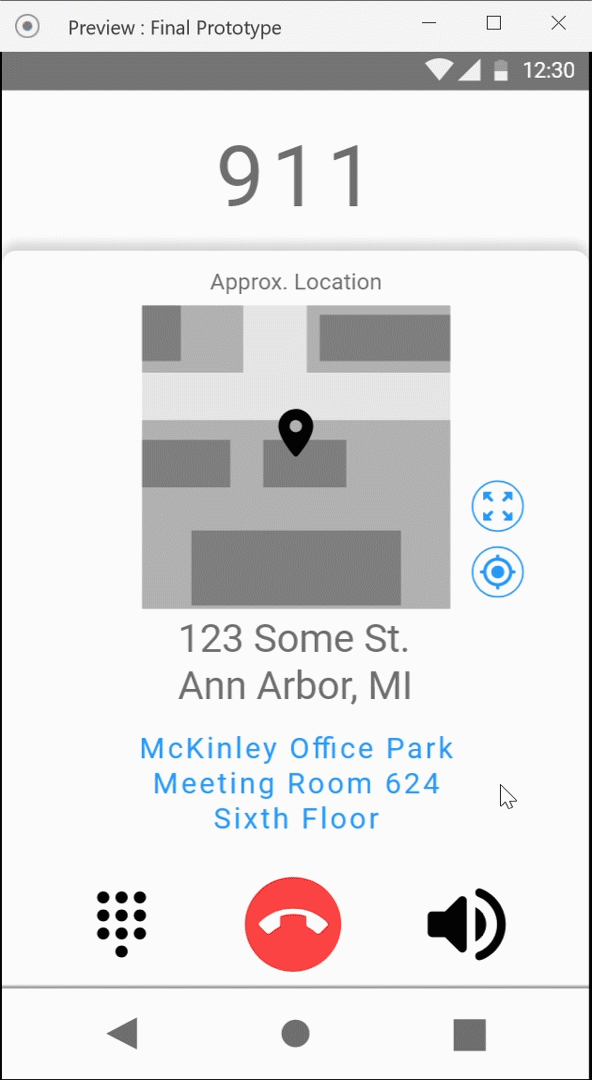
Floor Plan for Callers
Callers would be able to use the camera built into their smartphone to scan emergency QR code posters that are in the room with them. The location information that's encoded in them would be displayed for them to communicate to the 911 dispatcher they're speaking with.
They would be able to see their location on an interactive floorplan to help with taking instructions from the dispatchers.
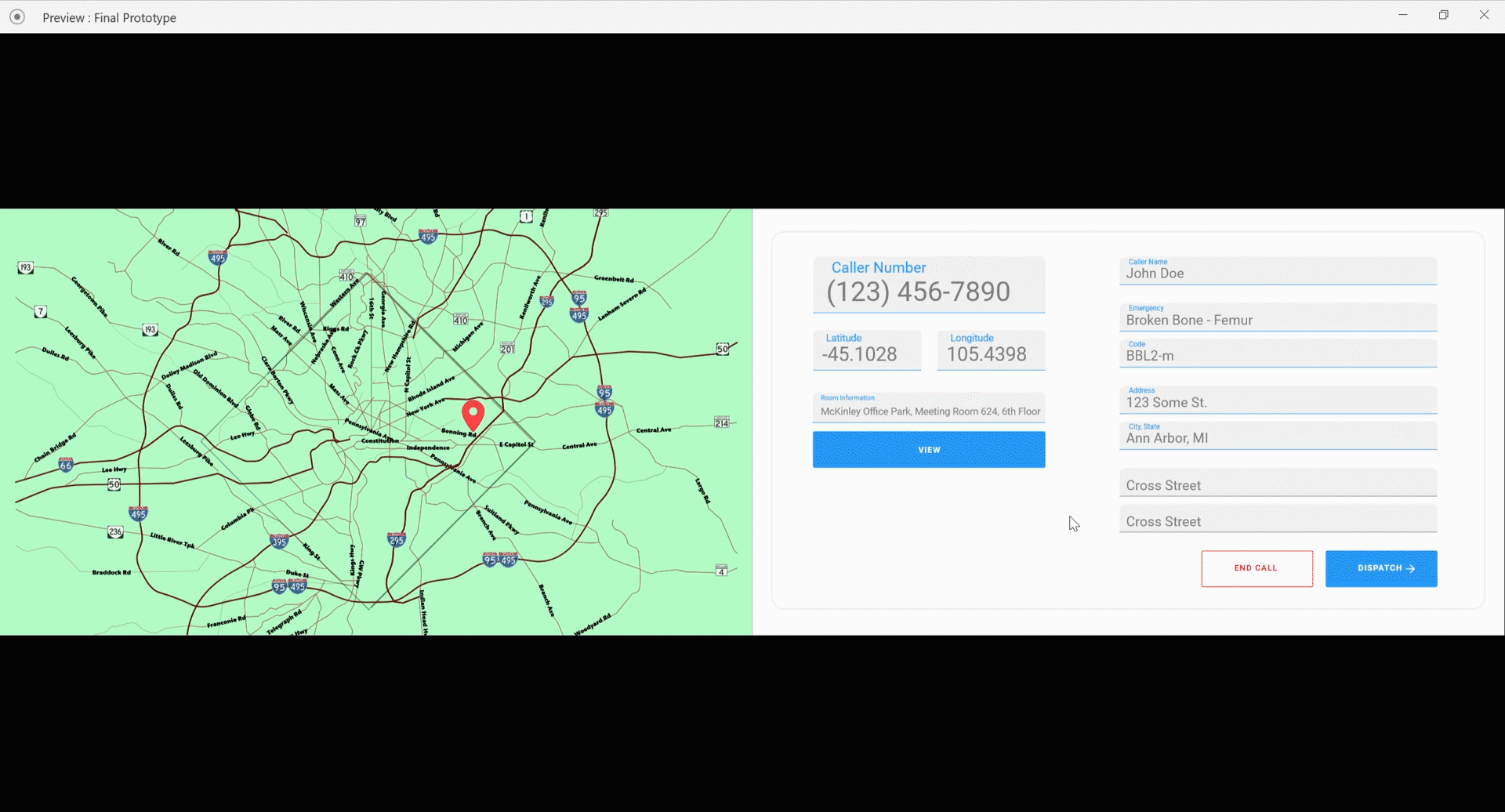
Floor Plan for Dispatchers
Dispatchers would also be able to see where a caller is on an interactive floorplan. In addition, they would be presented with more information than the caller, such as where first responders should enter a building. This information could be passed down the workflow to be presented to the first responders themselves.
Research & Design Process
I started brainstorming about two approaches for reducing 911 call processing time. On one hand were solutions to help operators, and on the other were solutions to help callers. Then I turned those ideas into some storyboards.
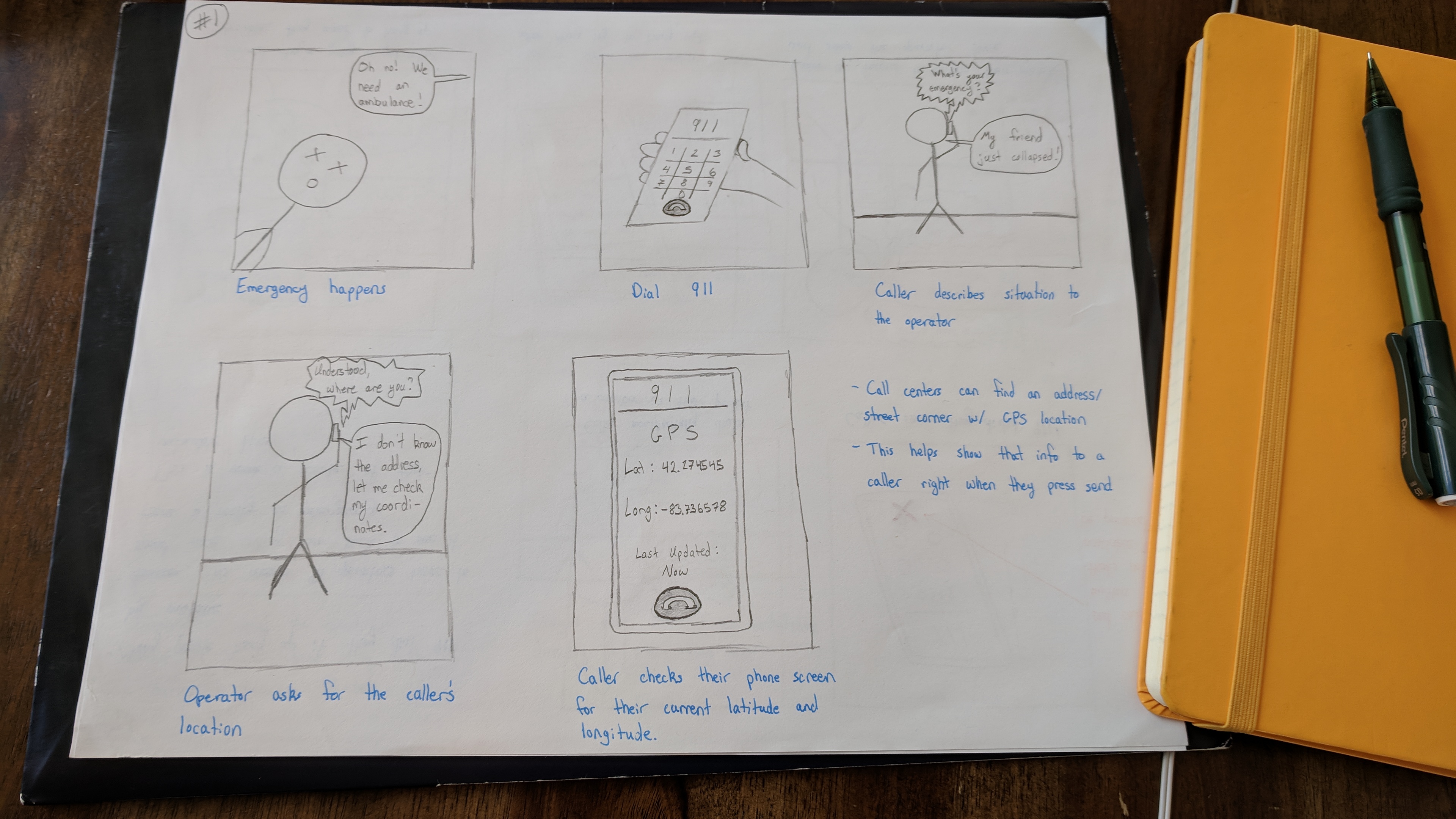
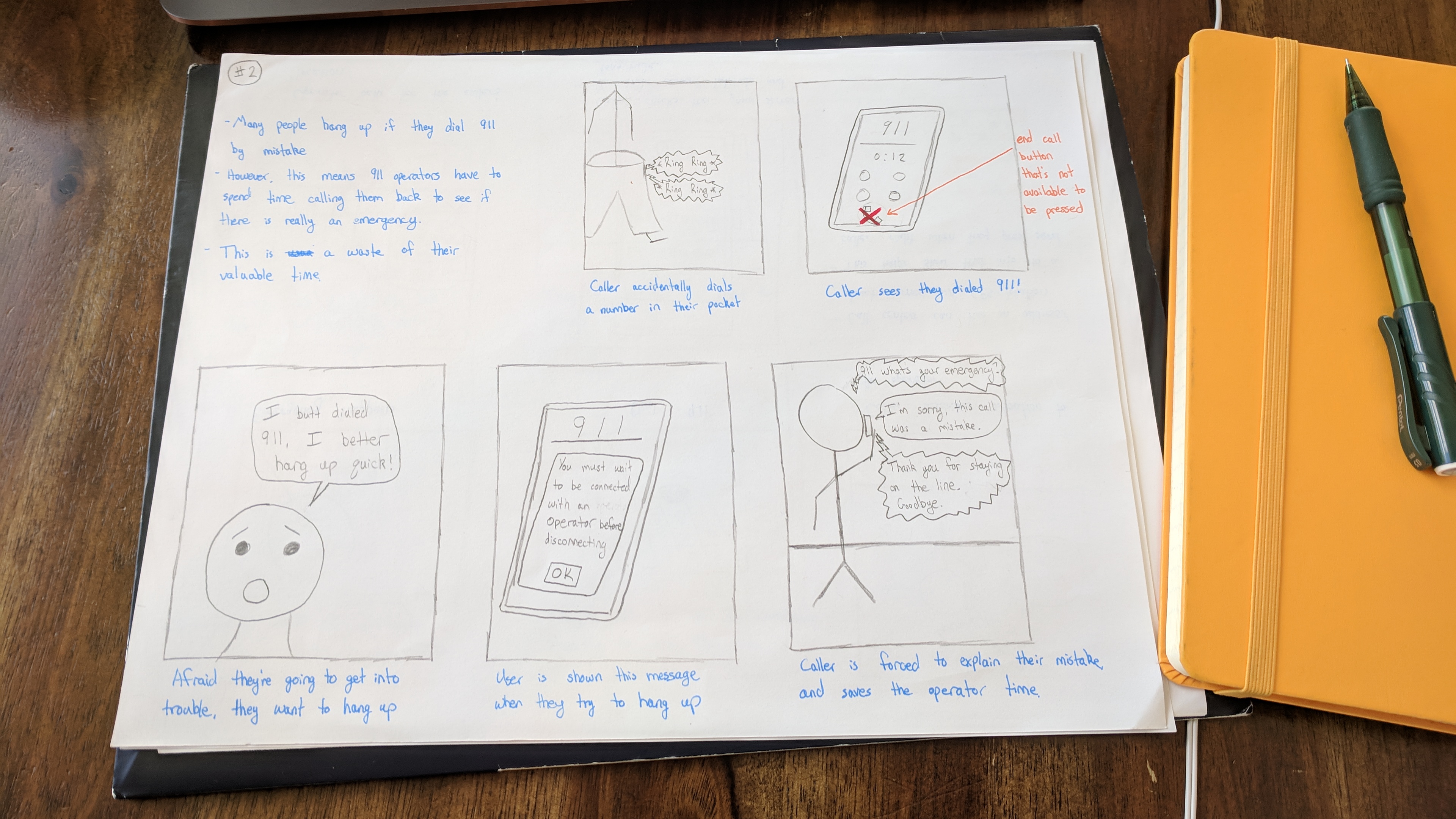
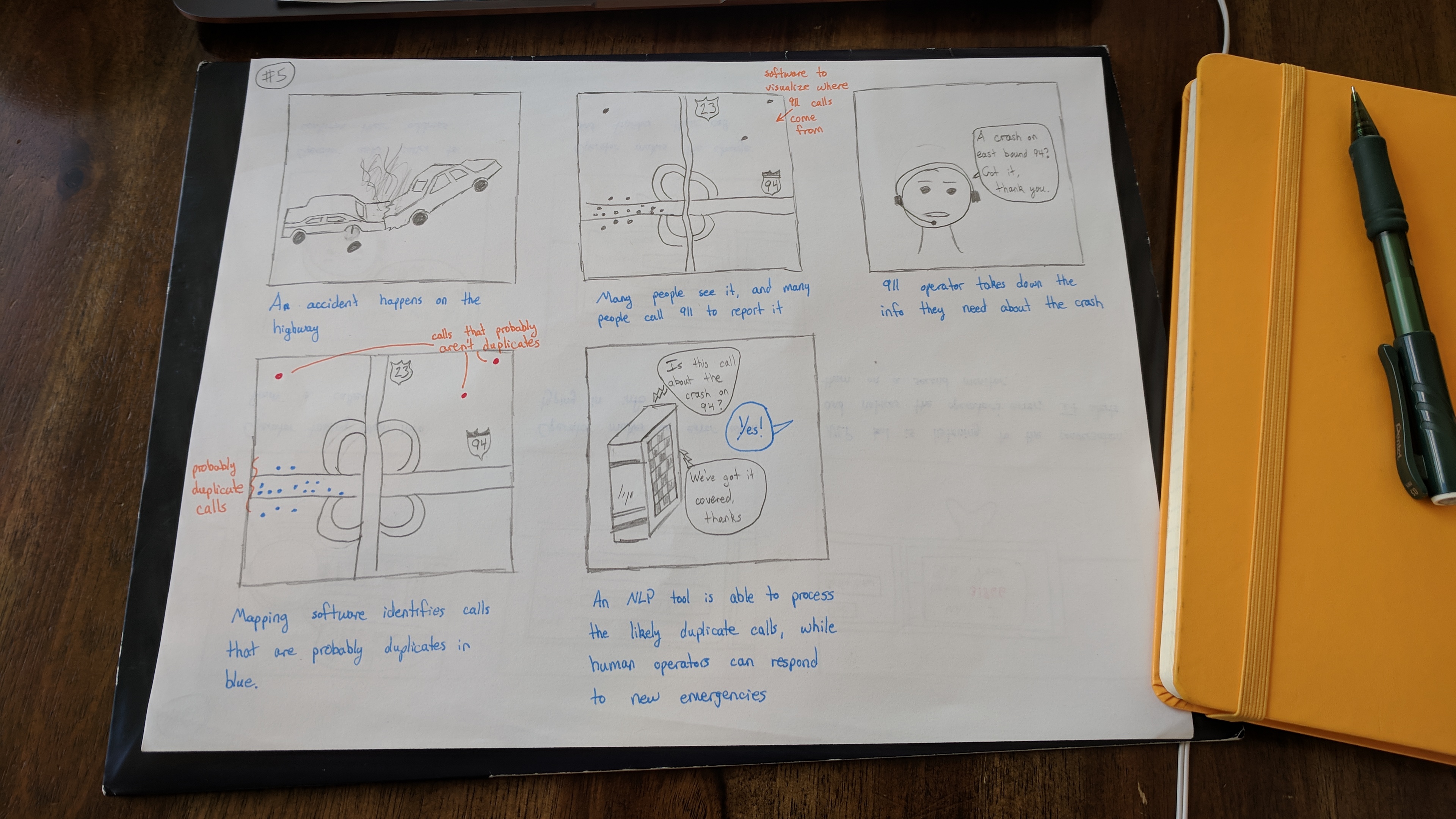

One idea has stuck out to me, because it could solve a problem the 911 call center manager said she hasn't heard a good solution for yet. Figuring out which floor or room of a building you're in isn't something that GPS can help with, and can slow down operators. What if we encoded that information in an easy way for smart phones to process like QR codes?
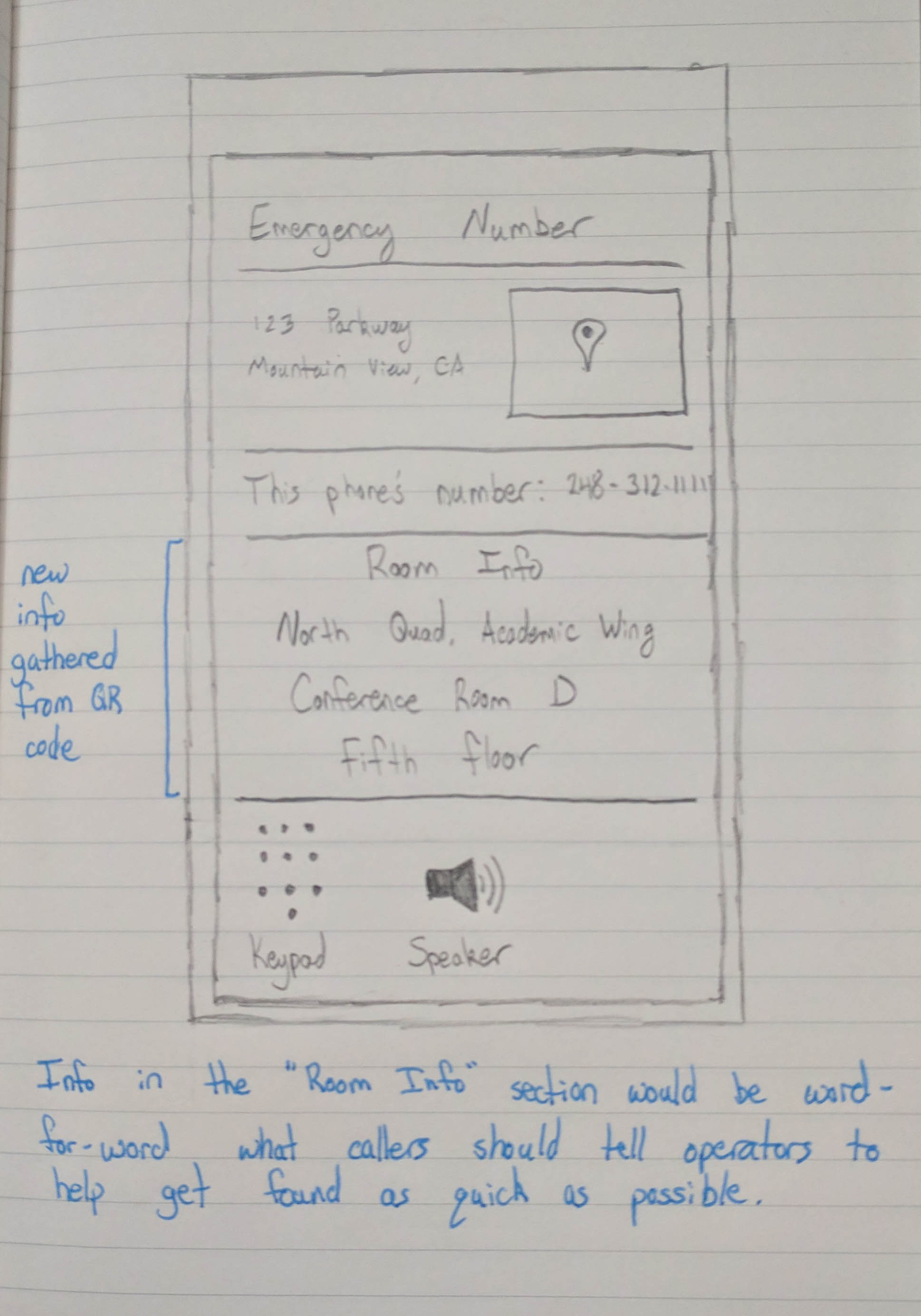
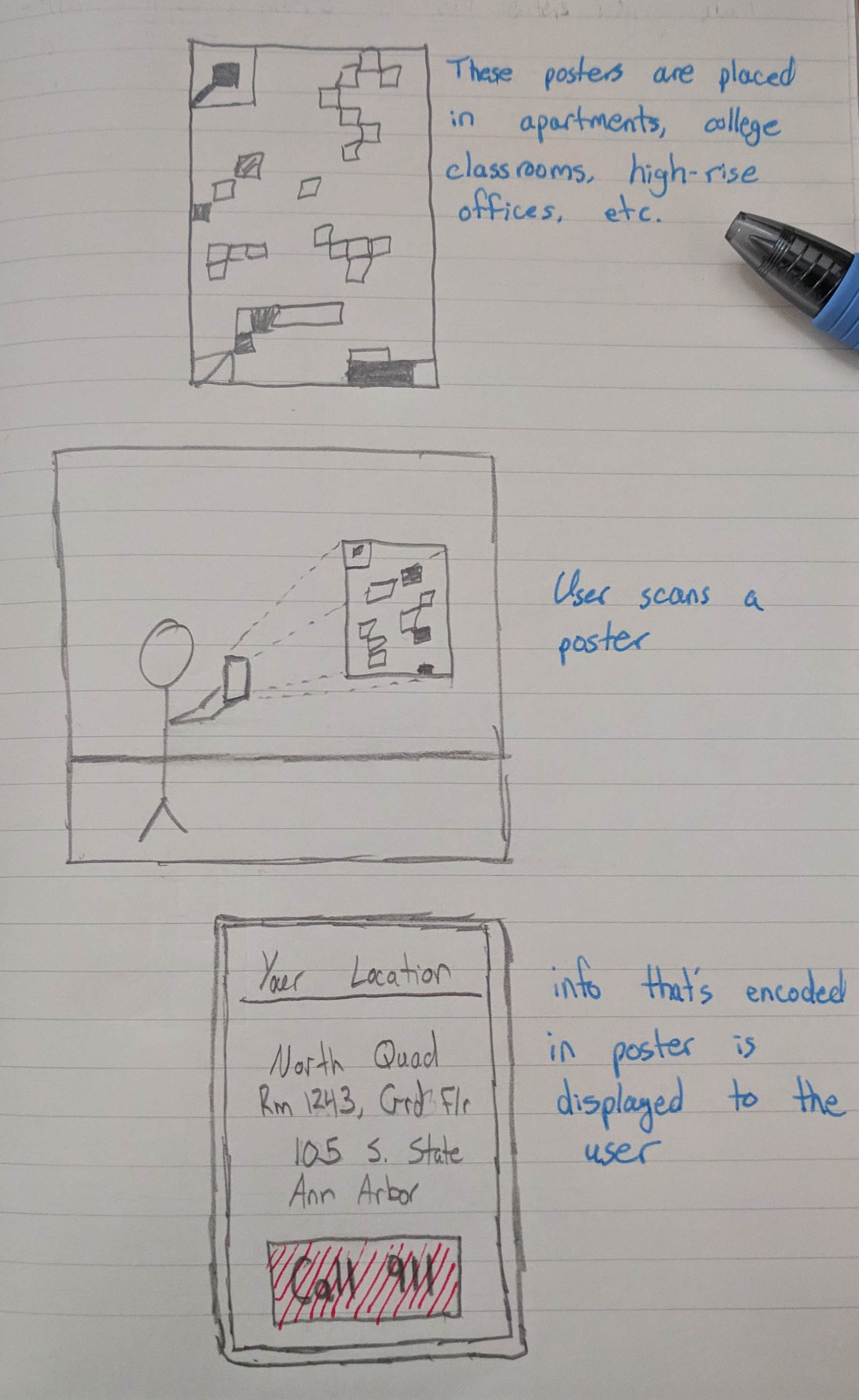
I created personas and story maps to help further understand the details an emergency system like this would need. I drew inspiration for the persona design from Compose.ly, and created the story maps with Cardboard.
Primary Persona
Victoria is visiting her friend's new apartment when an emergency happens. She needs to describe her location as best as she can even though she's never been there before.

Served Persona
Vince is 911 dispatcher in a large American city. He frequently needs to find out where a caller is inside of large buildings.
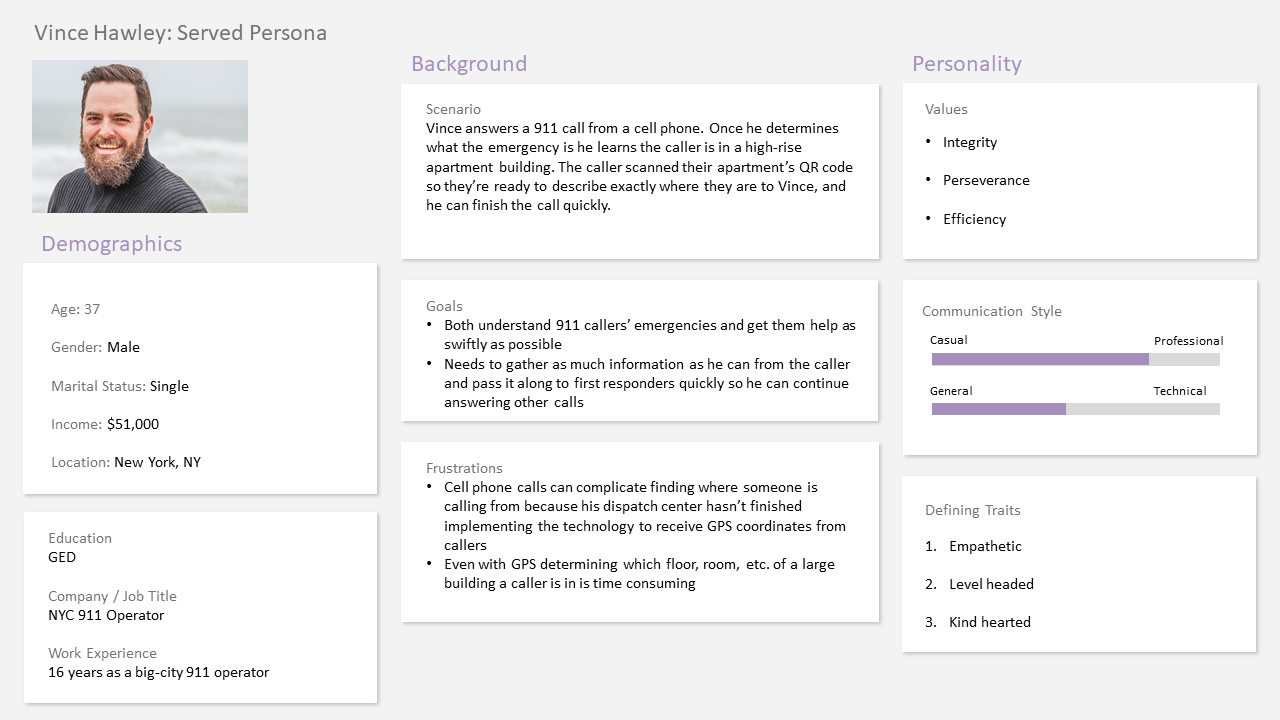
Before I started making wireframes and paper prototypes I ironed out some design details with the features I had proposed using a "Questions Options and Criteria" (QOC) analysis.
I decided to implement the critical feature of scanning QR codes to find location information by:
- Scanning a poster of a QR code once a 911 call has been placed
- A button on the call screen will take the user to their camera app to scan the poster
- The new location info will be added to the call screen after scanning without showing delivery receipts
Prototypes and Demos
Links to demos of a paper and mid-fidelity prototype are below.
Reflection
This project was a unique challenge for me to take on. It involved designing and prototyping interfaces for two separate parties using different devices working together to achieve a goal. I believe my final solution was creative and practical, but there is certainly room for improvement. QR codes are one way to encode information for smartphones to use, but they aren't foolproof. Providing a secondary way to input this room number information is something that warrants more research.
I plan to also present this idea to the local 911 center I toured at the beginning of this project to gather feedback from the experts there. I hope they can help improve the dispatcher UI I designed, and suggest other useful information to include on the interactive floor plan.